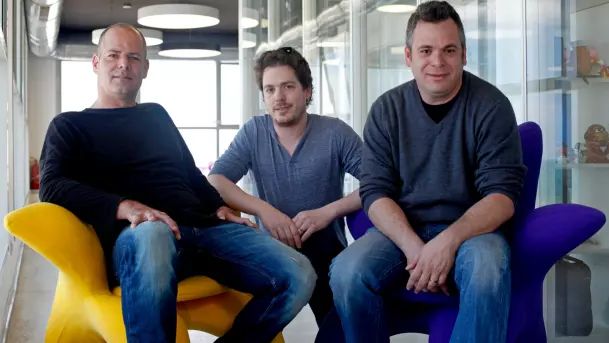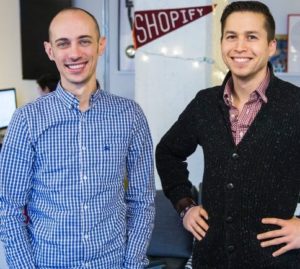DuckDuckGo : A Search Engine Protecting the Searchers’ Privacy
After the internet has brought a mammoth size wave of revolution in this modern era, Google has become the most popular search engine since then. Many people also use Yahoo! but the popularity of Google among the population is unparallel. According to the statistics of 2017, only 46.8% of the world population had access to the internet and among this crowd raised 3.5 billion searches every day. It is pretty impressive, right? With the amount of response to the Google search engine, it ensures no competitors at least shortly. But, in 2008 a search engine called DuckDuckGo was launched by an MIT graduate, Gabriel Weinberg. In the past eleven years, the company has made impressive progress, and someday, it might give a toe-to-toe competition to the world’s most popular and dominating search engine.
Weinberg’s first step into his career life was with a different start-up and eventually, through thick, and then, his professional life started shining like a dazzling start in the entrepreneurial galaxy.
About Gabriel Weinberg
Weinberg went to Massachusetts Institute of Technology for both his bachelor’s and master’s degree. He acquired his bachelor’s degree in physics and graduated in 2001, followed by completing his post-graduation in 2005.

Apart from founding DuckDuckGo, Weinberg also served as a co-author at Traction for five years, and he is currently a co-author at Super Thinking. Weinberg is the present CEO of DuckDuckGo, but before founding this company, the journey wasn’t a bed of roses for him.
Facing the Failure
Right after acquiring his bachelor’s degree, Weinberg launched a company called Learnection. It was a software company that was built to enhance social networking and increase the interaction of parents with students and school as well. He invested all the money he raised from his family and friends and ended up nowhere. He realized that he made two major mistakes, one he hired his friends who weren’t suitable for the job and underpaid them, and second, that he worked day and night on a project that had zero market demand.
In the following years, he worked on another four to six start-ups, and among them, NamesDatabase was a success, and the main reason behind it was creating a demand for it even before launching the product. Weinberg later sold the company to classmates.com for $10million in 2006.
The Idea of DuckDuckGo
The most fascinating quality of Weinberg is that he did a lot of experimenting irrespective of the success of his products. One day, Weinberg found more than 10,000 searches a day for the pages, he created while trying things out. He completely forgot about these websites and noticed that though he wasn’t up to something solid, an audience has already been created.
He was intrigued by the number of searches per day, especially on something which had zero product development. So, Weinberg wanted to come up with something where he will dedicate most of his time to driving traffic and increasing users, and hence, searches and very little to the product development.
So, on 25th September 2008, Weinberg launched DuckDuckGo without any intentions to give competition to Google. He founded the platform only because he thought the users would like it better!
Success of DuckDuckGo
The company was founded in Valley Forge, Pennsylvania, and it was self-funded by Weinberg at the beginning. Since Weinberg didn’t create DuckDuckGo, thinking he would do business at least for some decades, but just as a modified version of Google search engine with features that would attract more users. The best part of the business didn’t arrive in the first couple of years, as he got involved more with his family and giving little time to his newly launched product.
But, Weinberg realized DuckDuckGo kicked off the ground quite hard, and it is having a vast potential to grow. He started focusing on the work, and at the end of 2011, the company raised $3 million from Union Square Ventures. The next year, the company recorded 1.5 million searches per day, and the number of visits per day escalated from 39,000 in 2010 to more or less 1,400,000 in 2012.
In 2014, Mozilla added this search engine to Firefox 33.1, and in July 2016, the company started a joint venture with Yahoo! Recently, Google has announced that DuckDuckGo has been added to its search engine in Chrome 73.
Strategies
Since Weinberg’s primary focus was on the interest of the people, and on how to attract more users, he made privacy modifications in DuckDuckGo. Unlike Google, DuckDuckGo avoids the feature of the filter bubble and doesn’t track the search history of the user. This is a very advantageous feature of DuckDuckGo that helped it drive the traffic because once the public feels secure success is bound to happen.

Annasha Dey is an NIT student, who apart from studying engineering is also a content writer. She has a great interest in photography, writing, reading novels, and travelling as well. She is a foodie who loves socializing and hanging out with her friends. She is also a trained Kathak dancer and a big fashion enthusiast. Dey also loves watching TV series, which includes F.R.I.E.N.D.S. and Big Bang Theory. To be a better writer she prefers to read more











